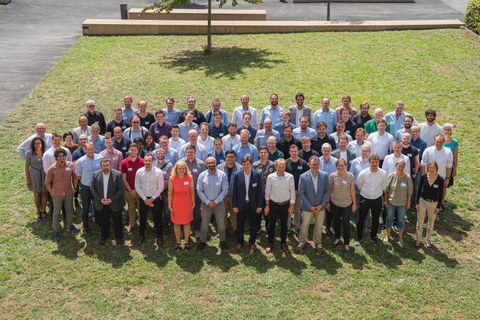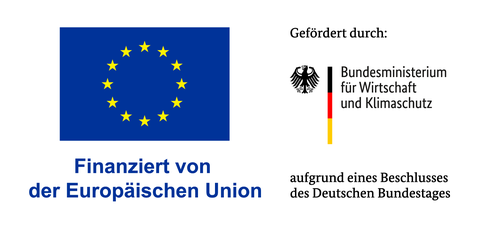16.08.2023
Projekttreffen DigiTain

Gruppenbild der Teilnehmenden
Erfolgreiche erste Schritte für eine volldigitale Produktentwicklung von nachhaltigen Elektroantriebsarchitekturen
Das Forschungsprojekt DigiTain (Digitalization for Sustainability) zur volldigitalen Produktentwicklung nachhaltiger Elektroantriebsarchitekturen ist in vollem Gange.
Nach dem ersten Projekttreffen in Stuttgart am 31.01.2023 kamen am 06. Juli rund 100 Teilnehmerinnen und Teilnehmer des Konsortiums größtenteils vor Ort in Dresden beim Projektpartner Institut für Leichtbau und Kunststofftechnik (ILK) der Technischen Universität Dresden, zum Teil aber auch virtuell, zusammen. Eröffnet durch die Herren Dr. Norbert Dölle (Mercedes-Benz, Projektkoordinator) und Prof. Niels Modler (ILK TU Dresden, Gastgeber & Projektpartner) standen der aktuelle Stand der Arbeitspakete, sowie der Bericht der ersten erreichten Ziele durch die AP-Leitungen im Mittelpunkt. Darüber hinaus bot sich den Projektpartnern auch an den Tagen um das Projekttreffen die Möglichkeit der übergreifenden Abstimmung und Diskussion im Rahmen von Workshops. Hier konnten die weiteren Forschungsarbeiten und Schnittstellen vertieft sowie die nächsten Schritte geplant werden, sodass beim nächsten DigiTain-Projekttreffen im Januar 2024 an den Fraunhofer-Instituten EMI und IWM in Freiburg spannende Zwischenergebnisse zu erwarten sind.
Die Professur für Virtuelle Produktentwicklung arbeitet im Forschungsprojekt DigiTain in den Arbeitspaketen 1 und 2 eng mit dem ILK zusammen. Im AP1 wird ein nachhaltigkeitsorientierter Produktentstehungsprozess (NEP) erarbeitet. Ziel ist die Optimierung der Ökobilanz auf Komponenten- und Gesamtfahrzeugebene während des Produktentstehungsprozesses zu ermöglichen. Im AP2 wird die Dokumentation und Nachvollziehbarkeit von Berechnungsprozessketten für eine prognosefähigere CAE-Modellierung und Validierung von Fahrzeugkomponenten betrachtet. Der Schwerpunkt liegt hierbei auf der Erfassung der relevanten Zwischenergebnisse und Optimierungsschritte in PDM/PLM-Systemen. Der Dresdner Projektpartner XPLM Solution GmbH befasst sich im Projekt mit der dafür benötigten programmtechnischen Umsetzung und Integration von neuen Schnittstellen.
